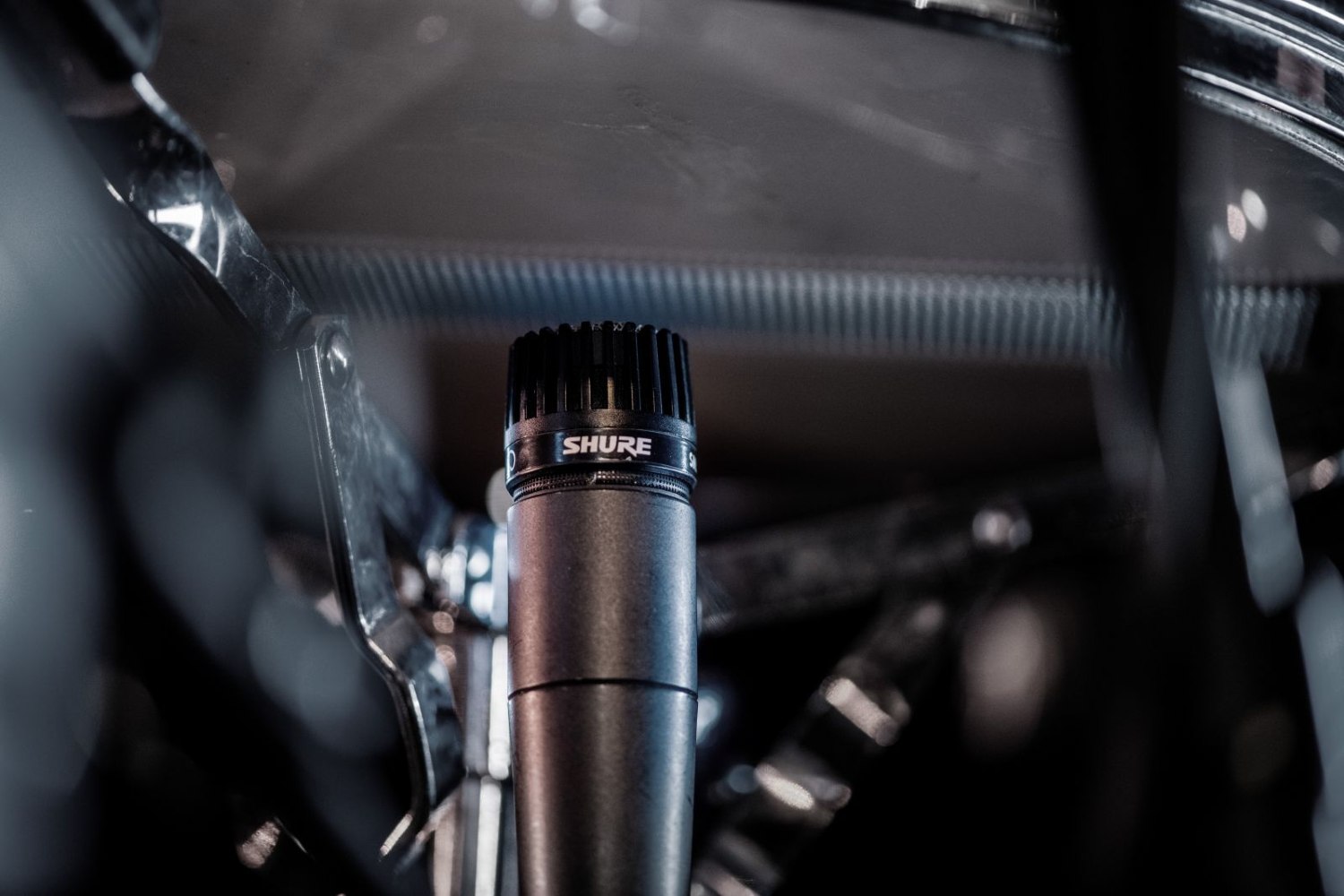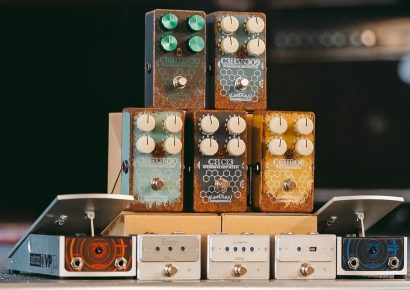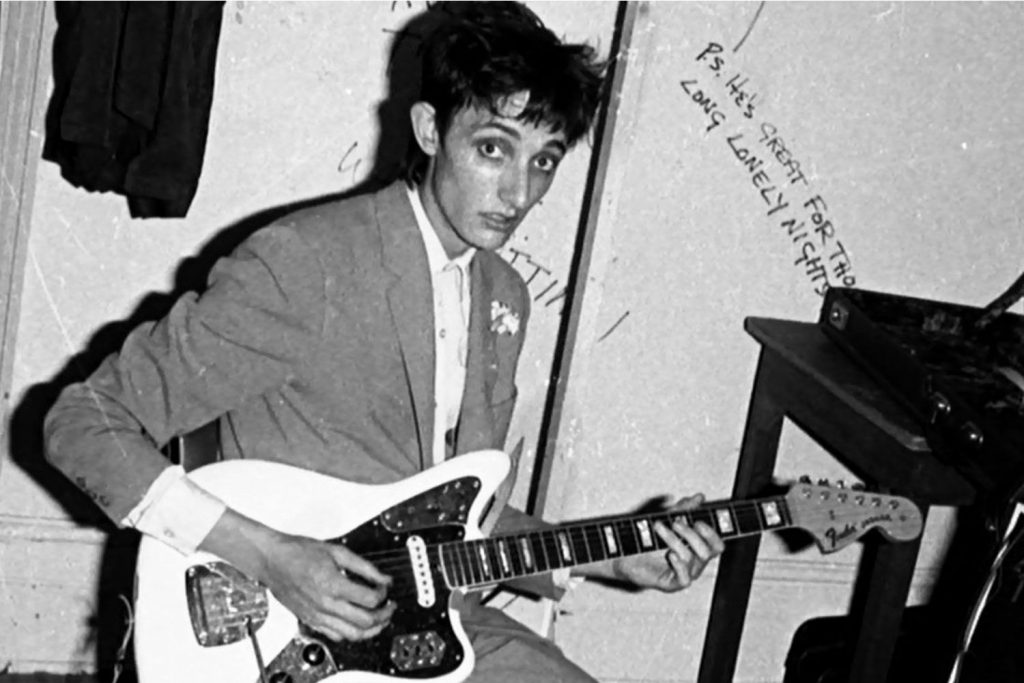Using the end of year sales to expand your mic locker
Speak to any recording engineer worth their salt and they’ll likely say one of, if not the most challenging instrument to record in the studio is a drum kit. To many, this isn’t exactly a news flash, but for aspiring engineers, the thought of recording a drum kit can strike as one hell of a daunting task! Not only the technical requirements of the task itself, but the sheer amount of microphones required to adequately get the job done.
This often means a decent upfront investment into one’s mic locker. What’s more, with the near endless amount of microphone choices available in 2022, it can be even harder to know what mics to choose for the task. ‘Do I go with individual mics? Do I go with a mic pack, or a combination of the two?’ These are just a couple of questions likely to crop up.
Read all the latest features, columns and more here.
With the impending Black Friday sales as well as Christmas fast approaching, it felt prudent to try and shed some light on the topic of mic lockers, but more specifically, drum miking on a budget, in aid of trying to help narrow down the choices ahead of this important time in the gear acquisition calendar. With so many end of year sales happening it’s a tactfully advantageous time to flesh out the ol’ mic cabinet and knock over drum kit logistics in one fell swoop, so let’s take a holistic look at recording a drum kit, and the ways in which we can use these sales to our advantage.
The elements
While it’s often helpful to look and think of the drums as one instrument in the context of a song or a mix, there are undeniably, multiple elements that make up the final sound of recorded drums. While the old one-mic technique can work in some circumstances, the typical requirements of modern music productions benefit greatly from having the ability to manipulate and process individual tracks, these being the various elements – kick, snare, toms, cymbals, and so forth. But what elements are most important and what mic is going to be best suited to recording each?
Taking the kick drum as an example, conventional wisdom tells us that a microphone capable of accurately reproducing low frequencies is going to be quite beneficial and this is true for the most part. However, like so much in recorded music, this isn’t necessarily gospel, but more just a general rule of thumb. The requirements of the production and the track should always lead the decision making process, and sometimes the trusty Shure SM57 works wonders on a kick drum if you are after a particular flavour!
But I digress. A dedicated kick drum microphone is, at its core, a staple to any microphone locker. Thinking outside of the kick drum for just a second here too, more often than not, this low-frequency-capturing mic is going to find its way onto other sound sources too, say a bass cabinet for example.
There are eons of options superbly suited for recording kick drums, many of which attract a pretty penny, but in keeping with a modest budget its hard to go past the Shure PGA52. You can find them on countless live microphone kits and for good reason, the PGA52 does a remarkable job of capturing the essence of a kick drum, particularly for the price point. Factor in the various discounts and promotions happening this time of year and these are an absolute steal, especially as a first kick mic. If the budget only allows for one mic to capture the kick, this industry-standard mic is more than enough to keep most out of trouble and serves as the perfect gateway into drum miking. A simple mono overhead and inside kick setup, can be perfect for anyone trying to lay down some scratch drums for a demo.
Arguably one of the most important elements of a drum kit (and inherently recording a drum kit), or any song for that matter is the snare drum, it’s the backbeat and one of the most important cultural signifiers at the production level. More than any other source, nothing dates a song more quickly than the wrong snare sound, so it is a source that we are no doubt going to be tinkering a lot with at the mix level, so capturing it correctly is of the utmost importance.
While the arguments of ‘what snare mic is the best’ are a common thread throughout the audio blogs of the world wide web, it’s often best to not unnecessarily complicate things. It’s often comical how some pieces of music gear become so synonymous with particular instruments. Much like how many believe the Neumann U47 is the only vocal microphone, the Shure SM57 has earned its similar standing for snare, only it doesn’t cost upwards of $20,000. In fact it’s still one of the most affordable microphones on the market even at full retail pricing, let alone at this time of year. As a snare mic, the SM57 is just so hard to beat and for countless engineers, is one of those desert island microphones that no engineer should be without. Same goes for guitar and on toms. Hell, there’s records in existence that were recorded exclusively with SM57s.They just work.
Another key logistical takeaway in regards to the SM57 for snare is that if we were looking to mic for snare on both the top and the underside bottom, this will require two microphones, and it can be advantageous to use the same model for both for the sake of symmetry and consistency at capture. This means that we are going to have to think about an investment that is both reasonably priced and easily replaceable in the event that we break/lose one. In the world of pro broadcast this consideration is commonly referred to as redundancy, and the SM57 is the ultimate redundant microphone option. They are plentiful, consistent from one model to the next, and can be acquired quickly without derailing a session.
So we’ve covered kick and snare and we’re only up to two (maybe three) mics so far – and the budget hasn’t been completely blown out of the water. In keeping with simplicity and budget, let’s look at overheads. Depending on the amount of microphones being used overall, choice of overheads can vary a little, as some will be using these as an overall picture of the drum kit type of perspective, while others will prefer the overheads to serve more of a cymbal-specific purpose. Regardless, a small diaphragm condenser is a great place to start for overheads, providing a nice amount of detail and clarity. This isn’t to say a trusty dynamic or ribbon microphone won’t have their respective places here, but a go to for many is hands down a condenser.
As for affordable small diaphragm condensers, the Shure PGA81 is a tried and true workhorse, with an even, flat response and robust build quality. What’s more, a mic like this will certainly cover numerous other recording tasks such as acoustic guitar and percussion.
Overall satisfaction
While we could certainly get away with capturing a solid drum sound with the four mics mentioned above, having the option of individual tom mics isn’t going to hurt. If you’re keen to commit to including tom mics in your mic locker, as well as the aforementioned individual mics, that’s awesome! And while you can find a ton of individual options out there for all of these, finding a dedicated mic pack is going to save a bit of coin in the long run.
If just a few mics such as kick, snare, and overheads is going to keep you out of trouble, something like the Shure PGASTUDIOKIT4 will absolutely do the job! But for those looking to go the whole hog, (not forgetting most of the mics in a dedicated kit will also cover other recording tasks), something like the PGADRUMKIT7 pack will provide ample options, with mics for kick, snare, toms, and overheads all included, with relevant clips, cables and a carry case to boot!

While these are certainly just some starting points for getting the job of recording a drum kit done, expanding out into more specific microphone territories is never a bad thing, but when working within a limited budget, the options mentioned above will certainly keep the mic locker full, without the breaking bank. And with that – happy mic hunting!
If these mics and setups pique your interest, Jands are currently running the Shure Instant Savings promotion which includes all the aforementioned mics and a whole host of lauded and famed recording mics at ridiculously good prices. Check in with your local audio or musical instrument store today and get started on your drum kit recording journey.
Head to Shure for more information on these mics.







